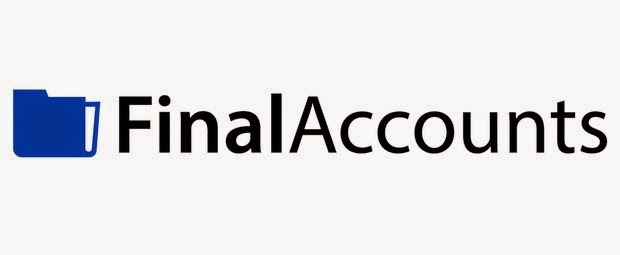Back to: FINANCIAL ACCOUNTING SS2
Welcome to class!
In today’s class, we will be talking about the final accounts – working exercises. Enjoy the class!
Final Accounts – Working Exercises

Illustration:
The following trial balance has been extracted from the ledgers of Mr Johnson as at 31st December, 2003.
DR CR
₦ ₦
Purchases / Sales 142,448 233,120
Returns 5,000 3,000
Discounts 2,412 1,368
Debtors /Creditors 38,600 23,280
Furniture and Fittings 5,000
Carriage inwards 2,500
Carriage outwards 5,176
5% Loan from Co-operative Society 15,000
Drawings 862
Land and Buildings 40,000
Rents, Rates and Insurance 11,946
Postages and Stationery 2,426
Motor Vehicles 20,000
Advertising 3,704
Provision for doubtful debts 500
Salaries and Wages 26,152
Bad Debts 2,468
Cash in Hand 624
Cash at Bank 6,108
Stock as at 1st January 2003 14,308
Equipment at cost 97,400
Accumulated depreciation on Equipment 43,300
Capital 107,566
427,134 427,134
Additional Information:
(a) Stock at close N16,442
(b) Outstanding expenses:
Advertising N354
Salaries and wages N848
Interest on loan N750
(c) Rent, Rates and Insurance paid in advance N426
(d) Depreciation:
Equipment 10% on the cost
Furniture and Fittings 5%
Land and Buildings 10%
Motor Vehicles 25%
(e) Salaries and wages include N3,600 paid to Mr Johnson.
(f) Records to typewriter bought on credit on 31st December 2003 for N10,000 have not been made in the books.
(g) Mr Johnson decided on 31st December 2003 to write off a further amount of N2,000 as bad debt.
(h) Mr Johnson’s children consumed goods worth N5,500 during the year.
(i) Provisions for doubtful debts 5%: discount allowance 10%
Prepare:
- Trading, Profit and Loss Account for the year ended 31st December 2003.
- A Balance Sheet as at that date.
EVALUATION
- Explain the following: (a) Cost of goods available for sale (b) Cost of goods sold (c) Gross profit
- Write short notes on the following: (a) Intangible assets (b) Wasting assets
Solution
Mr Johnson
Trading Profit and Loss Account for the year ended 31st December 2003
₦ ₦ ₦ ₦
Opening Stock 14,308 Sales 233,120
Add: Purchases 142,448 Less: returns inwards 5,000
228,120
Add: Carriage inwards 2,500
144,948
Less: children consumption 5,500
139,448
Less: returns outwards 3,000 136,448
150,756
Less:Closing stock 16,442
Cost of Goods Sold 134,314
Gross Profit c/d 93,806
228,120 228,120
Discount Allowed 2,412 Gross Profit 93,806
Carriage outwards 5,176 Discount Received 1,368
Postage & Stationery 2,426
Rent, Rates & Insurance (11,946-426) 11,520
Advertising (3,704 + 354) 4,058
Salaries & Wages (26152 + 848 – 3600) 23,400
Loan interest accrued 750
Increase in provision for doubtful debt 1,330
Provision for discounts allowed
(10/100 x (36,600 – 1830) 3,477
Bad debts: 2468 + 2000 4,468
Depreciation:
Equipment 9,740
Land and Building 4,000
Motor Vehicle 5,000
Furniture and fittings 250 18,990
Net Profit 17,167
95,174 95,174
Balance Sheet as at 31st December 2003
₦ FIXED ASSETS Cost Dep. NBV Capital 107,566 N N N
Add Net Profit 17,167Land & Building 40,000 4,000 36,000
124,733 Motor Vehicles 20,000 5,000 15,000
Furniture & fittings 5,000 250 4,750
Less: Drawings
(5,500 + 3,600 + 862) 9,962 Equipment 107,400 53,040 54,360
114,771 172,400 162,290 110,110
CURRENT LIABILITIES: CURRENT ASSETS:
5% Co-operative loan 15,000 Stock 16,442
Creditors 23,280 Debtors 38,600
Creditors for Typewriter 10,000 less: Bad Debts 2,000
Outstanding Expenses: 36,600
Interest on loan 750 less: Provision for
Salaries & wages 848 doubtful debts 1,830
Advertising 354 34,770
50,232 less: Provision for
discounts allowed 3,477 31,293
Insurance Prepaid 426
Cash at Bank 6,108
Cash in Hand 624
54,893
165,003 165,003
GENERAL EVALUATION
- Explain the following types of accounts and in each case, state the rules regarding the recording of transactions in their debit and credit sides: (a) personal accounts (b) real accounts (c) nominal accounts (d) liabilities account (e) asset account
- State seven reasons why an accountant will consider end – of – year adjustments while preparing the final accounts
- State five differences between bookkeeping and accounting
- List seven source documents that are used in preparing the cash book
- Explain five differences between a trial balance and a balance sheet
In our next class, we will be talking about Single Entry and Incomplete Records. We hope you enjoyed the class.
Should you have any further question, feel free to ask in the comment section below and trust us to respond as soon as possible.
